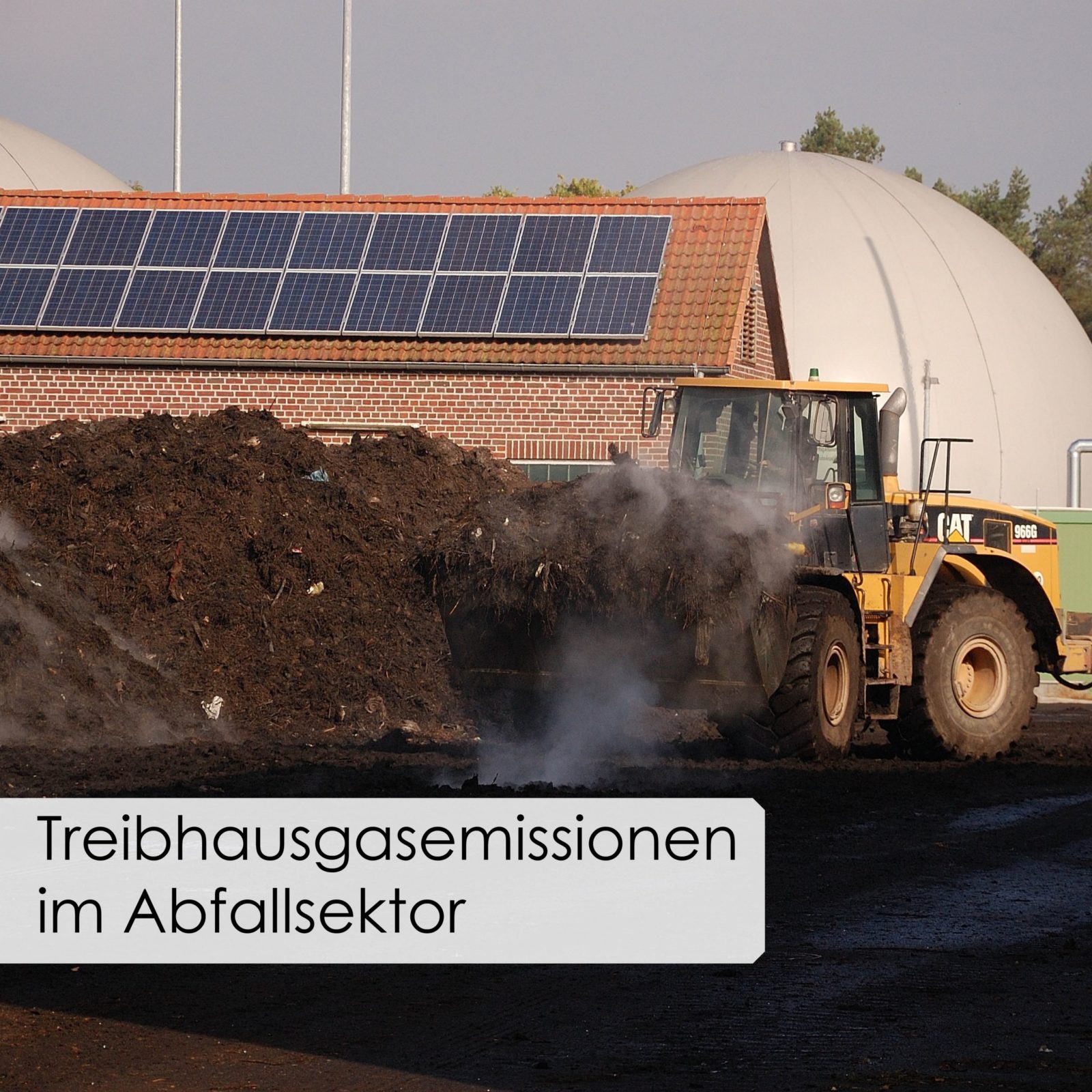Greenhouse gas emissions in the waste sector
As a party to the Climate Convention and its Kyoto Protocol, the EU is obliged to submit an annual inventory of the greenhouse gas emissions of all member states. This is published annually in an inventory report prepared by the EEA (European Environment Agency) (European Union greenhouse gas inventory and inventory report). The emissions of the seven most important greenhouse gases (CO2, CH4, N2O, hydrofluorocarbons, perfluorocarbons, sulphur hexafluoride and nitrogen trifluoride) are reported as CO2 equivalent (CO2eq) distributed over six sectors according to the Common Reporting Framework (CRF) of the Intergovernmental Panel on Climate Change:
- Energy
- Industrial processes and product use
- Agriculture
- LULUCF (land use, land use change and forestry)
- Waste
- Other
One of these sectors is waste management. Greenhouse gas emissions occur at various points in the waste management sector. CO2 is already produced during collection and transport, which is usually carried out with large collection vehicles. Greenhouse gas emissions also occur in processing, for example through transport and sorting machines. However, these emissions do not arise here directly from the waste treatment process, but in the generation of energy for the equipment needed for treatment. For this reason, these emissions are not included in the waste sector in the EEA inventory report, but in the energy sector. In order to avoid double counting of greenhouse gas emissions, waste incineration with the aim of energy recovery is also assigned to the energy sector.
In addition to these greenhouse gas emissions, however, there are also emissions that occur during the processes involved in waste treatment and are therefore counted towards the waste sector. A distinction is made here between five categories:
- a. Solid waste disposal
- b. Biological treatment of solid waste
- c. Incineration and open burning
- d. Wastewater treatment and discharge
- e. Other
In 2018, the waste sector accounted for 3.3% of total GHG emissions excluding LULUCF. CO2 emissions from biodegradation or incineration of waste of non-fossil origin are not included here (climate neutral). Emissions in the waste sector have decreased by 42.6% since 1990, from 241 Mt to 138 Mt in 2018. The reduction can largely be attributed to the development of different treatment and disposal options for municipal waste. In many member states, the share of landfilled waste has decreased, while there has been an increase in recycling, composting, landfill gas collection and waste incineration with energy recovery. The largest decrease in emissions in the waste sector has been in CH4 emissions from managed landfills. However, these still account for 62% of emissions in the waste sector. Overall, GHG emissions in the waste sector have shown a steadily decreasing trend in recent years, but as many Member States with high emissions in this sector have already reduced them by more than 70% and most of the technical possibilities there have already been exhausted, this trend is expected to slow down. Nevertheless, the potential for reducing GHG emissions in the waste sector remains high and significant reductions can be achieved with relatively simple measures.
Literature:
- European Environment Agency (2020): Annual European Union greenhouse gas inventory 1990-2018 and inventory report 2020. European Commission, Brussels
- European Environment Agency - greenhouse gas - data viewer
http://www.eea.europa.eu/data-and-maps/data/data-viewers/greenhouse-gases-viewer - European Commission: Emission monitoring and reporting
http://ec.europa.eu/clima/policies/strategies/progress/monitoring_de
#m&pgroup #engineeringforabettertomorrow #projects #whatwedo

